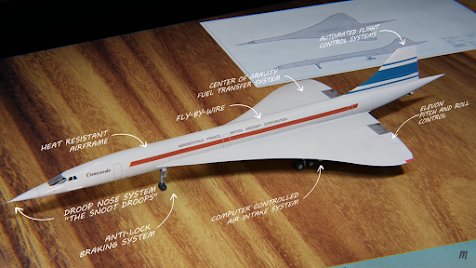Overall Summary: What I've learned so far....
As the end of my second year looms in, I'm summarizing all what I've learned in the course Writing for New Media. To start off, I've learned the basics of making a blogger site, the lingo and knicks and knacks to start a good blogging site, and most of all learning the ethics and values, and the dos and don'ts about blogging and creating content in the New Media. And these experiences I have, the lessons I've learned helped me in creating this blog site, revisiting the illustrious history of the world's iconic supersonic airliner...Concorde. And having this blog to tell such a compelling history about it not only just to those who are the true fans of Concorde, but to a new generation who are interested in aviation and wanting to learn about Concorde's unforgettable history throughout its entire career and service life. At a time when so many of us – children included – spend so much time with our heads down, it’s worth remembering to look up and take inspir...
